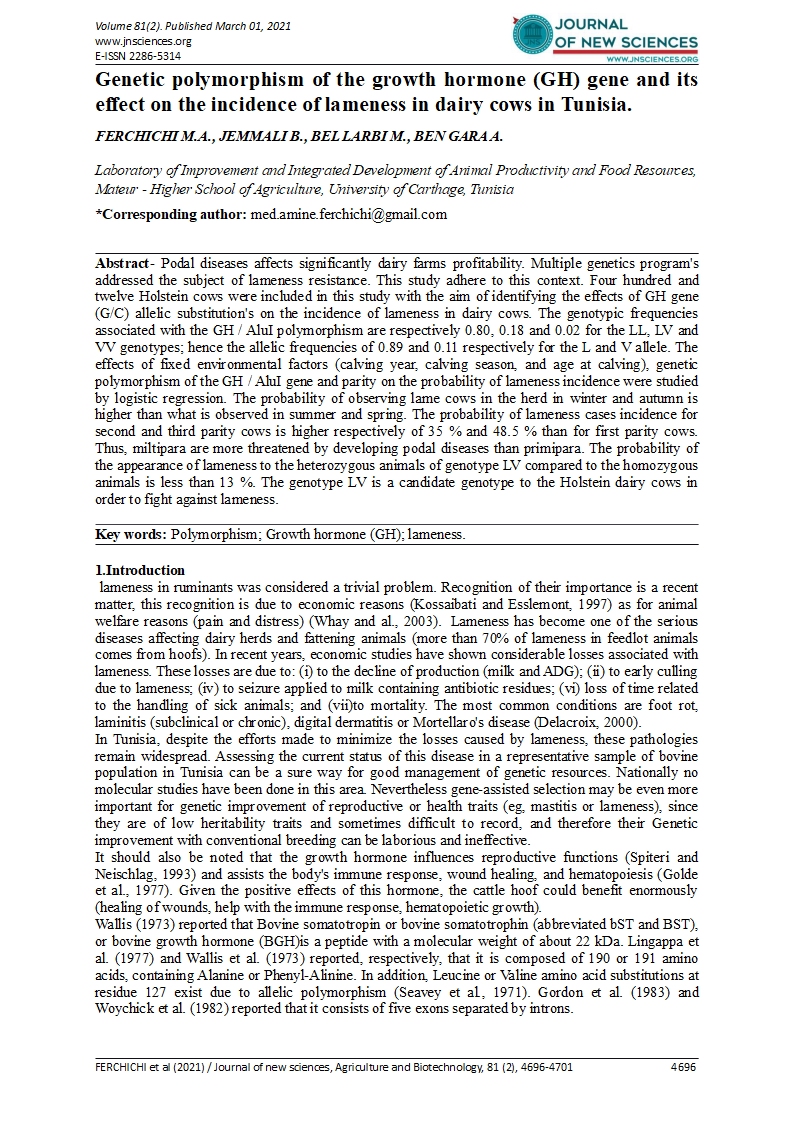

Genetic polymorphism of the growth hormone (GH) gene and its effect on the incidence of lameness in dairy cows in Tunisia.
FERCHICHI M.A.
JEMMALI B.
BEL LARBI M.
BEN GARA A.
Laboratory of Improvement and Integrated Development of Animal Productivity and Food Resources, Mateur - Higher School of Agriculture, University of Carthage, Tunisia
Abstract- Podal diseases affects significantly dairy farms profitability. Multiple genetics program's addressed the subject of lameness resistance. This study adhere to this context. Four hundred and twelve Holstein cows were included in this study with the aim of identifying the effects of GH gene (G/C) allelic substitution's on the incidence of lameness in dairy cows. The genotypic frequencies associated with the GH / AluI polymorphism are respectively 0.80, 0.18 and 0.02 for the LL, LV and VV genotypes; hence the allelic frequencies of 0.89 and 0.11 respectively for the L and V allele. The effects of fixed environmental factors (calving year, calving season, and age at calving), genetic polymorphism of the GH / AluI gene and parity on the probability of lameness incidence were studied by logistic regression. The probability of observing lame cows in the herd in winter and autumn is higher than what is observed in summer and spring. The probability of lameness cases incidence for second and third parity cows is higher respectively of 35 % and 48.5 % than for first parity cows. Thus, miltipara are more threatened by developing podal diseases than primipara. The probability of the appearance of lameness to the heterozygous animals of genotype LV compared to the homozygous animals is less than 13 %. The genotype LV is a candidate genotype to the Holstein dairy cows in order to fight against lameness.
Key words: Polymorphism; Growth hormone (GH); lameness.
